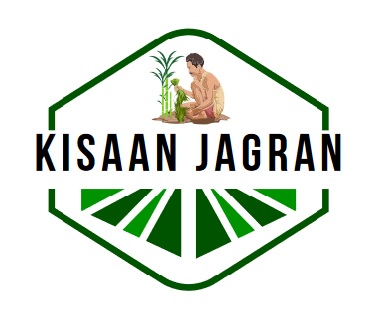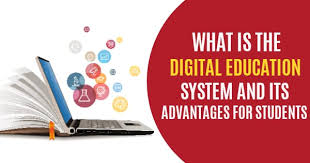
Digital Education in 21st century: Positive Outlooks and Challenges Publish Date : 07/10/2024
Digital Education in 21st century: Positive Outlooks and Challenges
Prof. R. S. Sengar
Digital technology has had a significant influence on education in the twenty-first century. The ultimate result of this influence has been the revolution of pedagogy and education due to the adoption of digital technology in the social, political, and economic spheres of society. Nowadays, learning is more strategic and focuses more on virtual collaboration and learner-centric learning. As a result, teachers no longer serve as knowledge sources but rather as learning facilitators. Traditional classroom lectures are no longer the only way that people can learn. Emerging technologies have made knowledge instantly available and being disseminated on an exponential scale. As a whole, schools have not only included technology as a crisis management tool but have also incorporated it into their existing curricula. Teachers can therefore use online learning as a potent teaching tool.
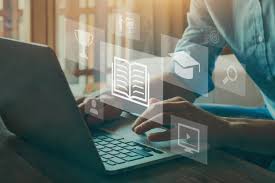
In the 21st century, India has witnessed a transformative shift in its educational landscape with the advent of digital education. This paradigm shift from traditional chalk-and-talk methods to digital learning platforms has brought forth both promising opportunities and daunting challenges. The National Education Policy 2020 advocates investment in digital infrastructure, online teaching platforms and tools, virtual labs, digital repositories, online assessments, technology and pedagogy for online teaching- learning, and other related areas.
This also supports multilingualism and highlights the power of language in teaching and learning through creative and hands- on approaches, such as gamification and apps, and by incorporating the cultural aspects of the languages through films, theatre, storytelling, poetry, and music.
With a compounded annual growth rate of 20.2%, the Al market in India is predicted to reach US$7.8 billion by 2025¹. In order to prepare students for the Al economy and to bring India's curriculum in line with contemporary requirements, the National Education Policy (NEP) 2020 places a strong focus on the need of imparting the requisite technical skills at all educational levels. It places a strong emphasis on integrating Al into education to support high-quality and skill-based learning.
The UNESCO State Education Report India (2022) proposes 10 concrete recommendations that, when implemented, could accelerate India's transformational journey towards technological education and sophisticated tech-driven solutions in educational processes. These recommendations are in keeping with the national vision of Digital India. These 10 recommendations are:
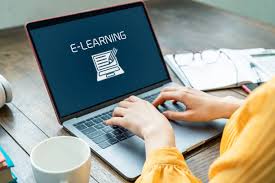
1. Consider the ethics of Artificial Intelligence in Education as an utmost priority
2. Rapidly provide an overall regulatory framework for Artificial Intelligence in Education
3. Create effective public-private partnerships
4. Ensure that all students and teachers have access to the latest technology
5. Expand Al literacy efforts
6. Attempt to correct algorithmic biases and the resulting discrimination
7. Improve public trust in Artificial Intelligence
8. Request the private sector to better involve students and educationists in developing Al products
9. Place ownership of data with the students
10. Embrace the versatility of Artificial Intelligence in Education systems
India's commitment at G20 Platform: Making Tech- enabled Learning more Inclusive, Qualitative and Collaborative at every level
India's G20 Presidency was no doubt an opportunity for the country to shape the agenda for an inclusive and sustainable development. Education. is one of the main focus areas of this journey, offering a fantastic opportunity to highlight the rich heritage of Indian knowledge systems. Accordingly, the Education Working Group (EdWG) 2023 has concentrated on areas to promote inclusive, egalitarian, high-quality education and opportunities for lifelong learning for everyone.
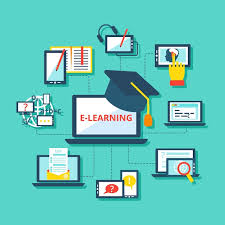
The G20 Indian Presidency Education Working Group Report 2023 addresses the role of technologies in learning, the growing trend towards blended and hybrid learning, and the need for countries to identify entry points and levels of investment for their digital transformation while considering their level of readiness, particularly for emerging technologies such as Artificial Intelligence (AI), and the potential risks.
The report highlights key components for enhancing tech-enabled learning: coordination, content, connectivity, capacity, culture, and cost, emphasising the importance of data ecosystems and analytics in improving education management.
The G20 outcome document emphasises India and G20 countries' commitment to digital technologies for inclusive, equitable, and accessible education. It calls for collective development of affordable, accessible technology ecosystems and learning resources including in local languages, wherever applicable, that are affordable and easily accessible, addressing the digital divide and ensuring equitable, inclusive, and secure technological infrastructure.
Positive Outlook
Technology will revolutionise education in this context and beyond because it offers students real-world experience, an audio-visual learning environment, makes studying more enjoyable, a virtual library of knowledge, more tools for teachers, and more interactive learning environments. In this context and beyond, technology will be the imminent of education as it gives practical experience for the future, provides an audio-visual experience, makes studying less boring, a treasure trove of unlimited information, gives additional tools to teachers, and builds more interactive and instils collaborative spirits towards learning. The benefits envisaged for digital education are as follows:
- First, a greater number of populations can now access high-quality educational resources thanks to digital education, which has democratised learning. The availability of lectures, study materials, and interactive sessions to students from all across the nation has been made possible by the widespread use of smartphones and reasonably priced internet, leveling the playing field in terms of education.
- Second, pupils' inventiveness and originality are encouraged by digital education. Immersion learning opportunities that foster critical thinking and problem-solving abilities are offered by interactive simulations, multimedia information, and virtual laboratories. Students are more equipped to meet the changing needs of the modern workforce, which values flexibility and creativity, thanks to this.
- Digital platforms also make personalised learning sessions possible. Learning materials can be customised using adaptive learning technologies to fit each student's unique learning preferences and speed. This way, no student is left behind. This tailored strategy improves understanding and recall, which boosts academic performance.
- Moreover, digital education allows for worldwide collaboration and knowledge sharing across national borders. Students can work on projects with peers from other nations, take part in international webinars, and be exposed to a variety of viewpoints, all of which can help them develop a more global perspective.
- Ultimately, lifelong learning is supported by digital education. Professionals can reskill and upskill online, keeping up with the rapidly changing demands of the industry and quick breakthroughs in technology. Online courses and certificates facilitate this process. This culture of ongoing learning improves job opportunities and boosts the economy.
Challenges
When we enable billions of Indians to realise their full capacity for learning and cooperation, we will be able to make rapid progress in education. Learning is the core of education, and it shouldn't happen only in classrooms. Learning for all, learning by all, and learning with all should be the goal. However, there are many obstacles in the way of fully utilising digital education in India.
First of all, there is still a digital divide, uneven distribution of ICT access, a lack of digital literacy, particularly in the community, impedes the growth of digital learning nationwide and presents additional monitoring challenges. Underprivileged groups are still unable to obtain dependable internet access and gadgets. This discrepancy makes educational injustices worse and prevents digital learning initiatives from reaching a wider audience.

The present status of digital infrastructure available in schools across India needs to be addressed on a priority basis for building a more resilient system for the future and to meet the pace with the digitalisation process. Unless these core shortcomings are addressed, inequalities will continue to widen. At the national level, the overall status of availability of digital infrastructure can be observed from the given analysis in Graph 1 and 2. As per the database of UDISE+ 2021-22, out of total 14.89 lakh schools, around 7.07 lakh (47.5%) schools have computer facility, 5.05 lakh (33.9%) schools have Internet facility and around 2.22 lakh (14.9%) schools have smart classroom facility. Graph 2 highlights the management wise availability of digital infrastructure facilities in schools which was found to be inadequate.
Second, there is still effort to be conducted to ensure the reliability and quality of online instructional materials. It is vital to select and validate trustworthy sources due to the deluge of information available on the internet. To maintain educational standards, educators and legislators need to put strong procedures for quality control and content monitoring in place.
Furthermore, a paradigm change in instructional strategies and teacher preparation is required for digital education. For teachers to successfully incorporate technology into the classroom, extensive professional development programs are necessary, as many find it difficult to adjust to digital tools and pedagogies. Subsequently, there are significant risks associated with cybersecurity for digital education systems.
Cyberbullying, phishing scams, and data breaches can jeopardise student privacy and erode confidence in online learning settings. As a result, strict cybersecurity guidelines and procedures are necessary to protect private data and guarantee a safe learning environment.
Finally, there are concerns that students' interpersonal skills may decline and social isolation may be reinforced by digital education. For overall development, screen time must be balanced with offline interactions and extracurricular activities. On the whole, we must design education policies aimed at developing students' digital competencies, going beyond the operational capabilities of using apps or the internet and including cognitive skills linked to critical thinking, creativity, and problem solving in digital contexts (OECD, 2019).
Initiatives Taken to Expand Digital Education
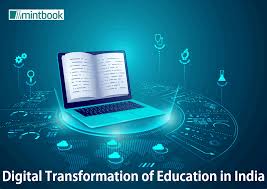
India is one of the leading examples of an equity- oriented vision for narrowing the digital learning divide. India's growth story stands on an expansive digital public infrastructure, designed to ensure that no one is left behind. It envisions transforming the entire nation into a digitally empowered society and knowledge economy.
Educational technology will play a critical role in bringing this vision to reality. India's approach to building Digital Public Infrastructure in education is to keep the learners at the centre and ensure equitable access and opportunities. For this the government is providing enabling policy framework, building infrastructure and developing the digital content ecosystem that ensures access and equity for all learners.
The Ministry of Education has also taken up various digital education activities to widen educational opportunities, promote equity, and improve access and quality of educational processes at the school and teacher education level. The diverse programmes carried out can broadly be categorised as research and development, training, extension and dissemination in the areas of educational technology and Information and Communication Technologies (ICTs) in education.
- Enhancing and Strengthening the Scope of ICT under Samagra Shiksha Abhiyan: Samagra Shiksha, the largest Centrally Sponsored Scheme for School Education in India not only provide support for ICT and smart classroom to both Government. and Government Aided schools in all states and UTs but also has provisions for making quality. E-contents for students and teachers. The scheme is also providing financial support to States and UTs for developing quality e-contents under DIKSHA. Technology will be able to create lifelong learners. Who can figure out what concepts children need to learn, unlearn and relearn at various stages of life to live sustainably in a green, regenerative future? Acknowledging this, the Government of India is committed to ensure learning for all, with equity, to cover all students at all levels of education and in all geographical locations, even in the remotest parts of the country so that digital learning is no longer the luxury of a few people.
- National Digital Library (NDL) Rashtriya E-Pustakalaya: This is a pioneering digital library platform which aims to enhance the accessibility of non-academic books for children and adolescents across India. This platform will provide round-the- clock access to books, overcoming geographic limitations. The digital library aims to resolve the 'last mile' accessibility issue for many by offering over 10,000 books in more than 100 languages within the next 2-3 years. Currently, over 1,000 books in 23 languages are available. The initiative, expected to bridge the digital divide, will ensure books are accessible anytime and anywhere, promoting healthy reading habits among youth. The app is available on both iOS and Android platforms.
- Jaadui Pitara (https://ejaaduipitara.ncert.gov. in): Learning Teaching Materials in the form of Jadui Pitara as well as the Digital version of Jadui Pitara have been developed. This is a play-based Learning Teaching Materials for children in the age group 3 to 8 years. It comprises of playbooks, toys, puzzles, posters, flash cards, story books, as well as reflecting the local culture, social context and languages. It is designed to pique curiosity and accommodate the diverse needs of learners in the foundational stage.
- PM e-Vidya 'DIKSHA': DIKSHA (Digital Infrastructure for Knowledge Sharing) is a national platform for school education. DIKSHA has been adopted by almost all the States/UTs, central autonomous bodies/boards, including CBSE and NIOS. DIKSHA can be accessed by learners and teachers across the country. Each state/UT leverages the DIKSHA platform in its way, as it has the freedom and choice to use the varied capabilities and solutions of the platform to design, develop, disseminate e-contents and run capacity building programs for teachers, learners and administrators.
DIKSHA currently hosts 6,500+ textbooks energised with QR codes, including 377 NCERT textbooks and ETBs. There are more than 3.51 lakh digital contents. on DIKSHA, including audio-visual content, reading and practice material, interactive resources, and lesson plans. These e-contents are available in 84 languages. For digital content to aid in the teaching and learning processes, a rich repository of varied resources was contributed by schools/individual teachers, content partners, NGOs and corporates under CSR towards Vidya Daan against the various content requirements of NCERT/ CBSE/ States/ UTs. As of date, more than 2.55 lakh content pieces have been contributed under Vidya Daan.
The National Institute of Open Schooling (NIOS), an autonomous body under MoE, has also been onboarded the DIKSHA plateform as a separate tenant under which more than 3,300 contents (videos+pdfs+e-textbooks) have been uploaded for Secondary (equivalent to 10th grade) and Senior Secondary level (equivalent to 12th grade). NIOS aims to leverage DIKSHA to make education equitable and inclusive for the marginalized and disadvantaged groups. NIOS offers a broad spectrum of courses of study in general, vocational and continuing education and life enrichment courses up to pre-degree level.
Cinclusion
For children to live sustainably in a green and regenerative future, technology will be able to develop lifelong learners who can determine what concepts they need to acquire, unlearn, and relearn at different stages of life. In recognition of this, the Indian government made a commitment to ensure equitable access to education for all students, regardless of their educational background or location-including the most distant areas of the nation-so that access to digital learning would no longer be a privilege enjoyed only by the wealthy.
In conclusion, digital education has the potential to completely transform Indian education in the twenty- first century. India can fully utilise digital education to empower future generations and propel socioeconomic progress by bridging the digital divide, ensuring content quality, improving educator readiness, supporting cybersecurity measures, and encouraging holistic development. India can lead the way in creating an innovative, robust, and inclusive education system in the digital era if all stakeholders work together, including educators, legislators, parents, and technology providers.

Writer: Dr. R. S. Sengar, Director Training and Placement, Sardar VallabhBhai Patel University of Agreiculture and Technology, Modipuram, Meerut.
